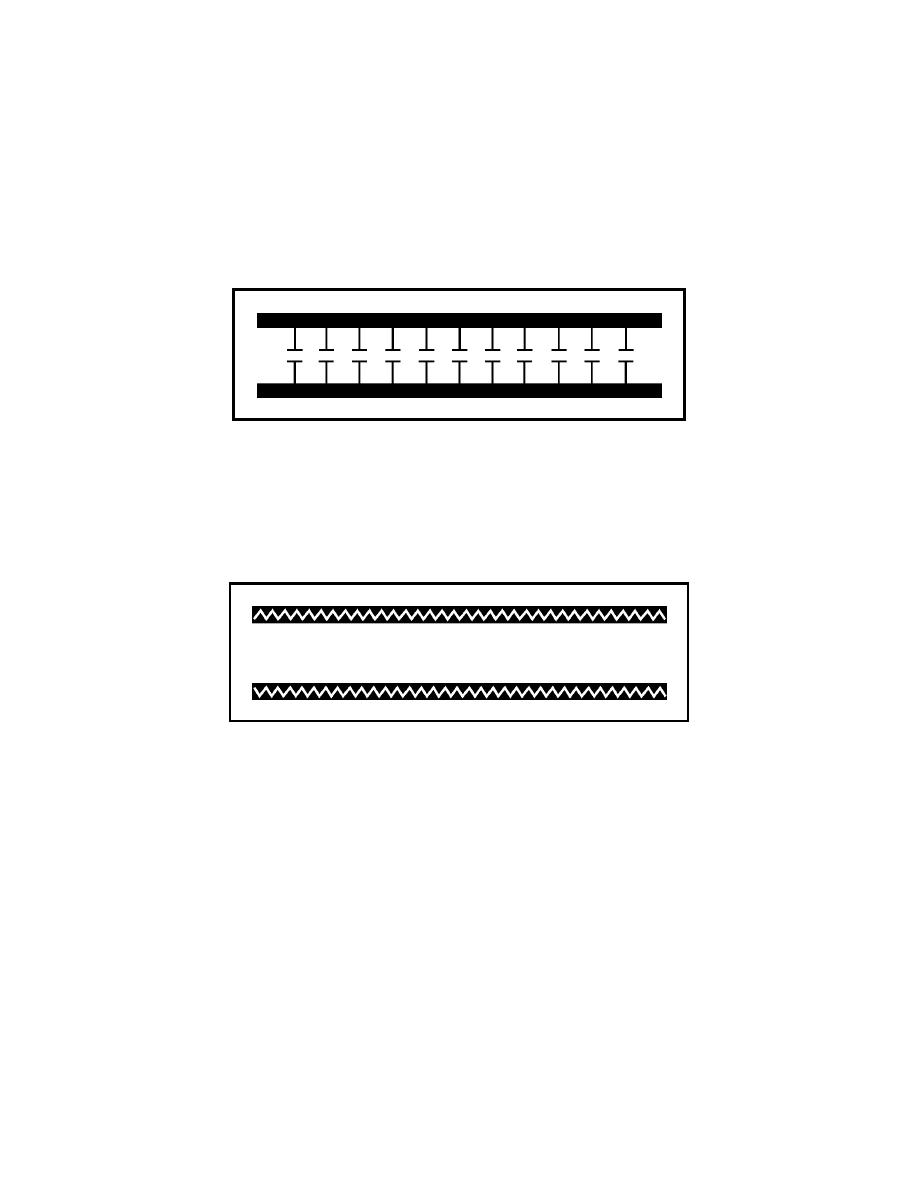
TC 9-64 _________________________________________________________________________
Capacitance of a Transmission Line
3-44. Capacitance also exists between the transmission line wires, as
illustrated in figure 3-11. Notice that the two parallel wires act as plates of a
capacitor and that the air between them acts as a dielectric. The capacitance
between the wires is usually expressed in picofarads per unit length. This
electric field between the wires is similar to the field that exists between the
two plates of a capacitor.
Figure 3-11. Distributed Capacitance
Resistance of a Transmission Line
3-45. The transmission line shown in figure 3-12 has electrical resistance
along its length. This resistance is usually expressed in ohms per unit length
and is shown as existing continuously from one end of the line to the other.
Figure 3-12. Distributed Resistance
Leakage Current
3-46. Because any dielectric, even air, is not a perfect insulator, a small
current known as leakage current flows between the two wires. In effect, the
insulator acts as a resistor, permitting current to pass between the two wires.
Figure 3-13 shows this leakage path as resistors in parallel connected
between the two lines. This property is called conductance (G) and is the
opposite of resistance. Conductance in transmission lines is expressed as the
reciprocal of resistance and is usually given in micromhos per unit length.
3-12



 Previous Page
Previous Page
